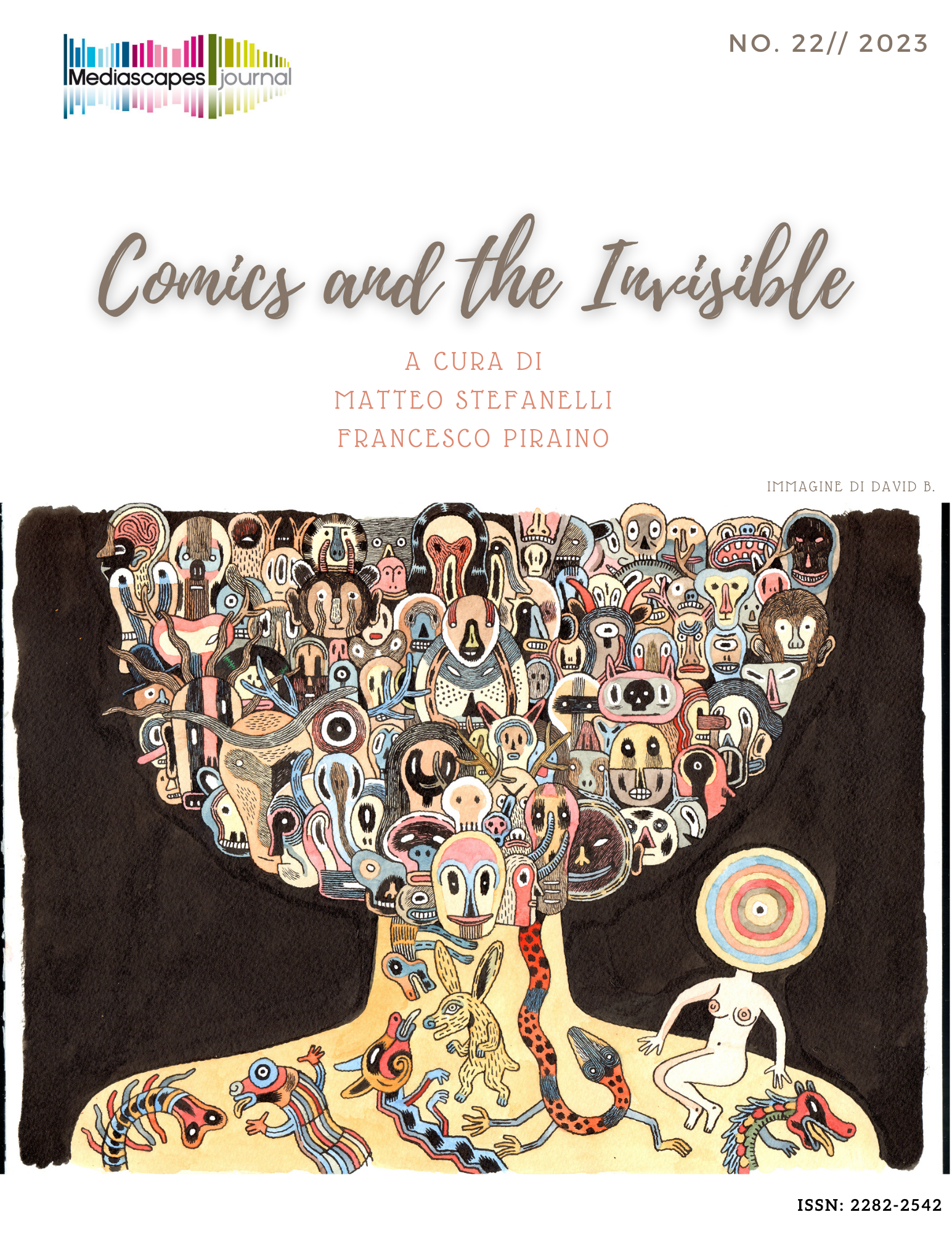Dancing with the (un)seen
Problematizing the viewer’s gaze through Mediterraneo’s visual aesthetics
Parole chiave:
Migration, Mediterraneo, Viewing, Gaze, AestheticsAbstract
Since the 1990s, international migration has become one of the most pressing socio-political issues in Italy. Subsequently, the topic of undocumented immigration has gained increased visibility in Italian society, making the infamous images of incoming masses of migrants ever more frequent in the mainstream media. At the same time, since the turn of the new millennium and thanks to the enhanced diffusion of the graphic novel format, significant changes also occurred in the Italian comics scene at the start of the 21st century. The fumetto di realtà [non-fiction comics] saw a consistent rise in popularity, exemplified by the proliferation of autobiographical comics and graphic reportages focusing attention on both personal experiences and socio-political events. Comics and graphic novels have started addressing the topical events of the present, including the phenomenon of immigration towards Italy from the Mediterranean basin. This study aims at exploring the peculiarities of graphic narratives in portraying experiences of forced migration, by paying particular attention to the specific framing strategies of the medium and the political affordances therein. Through the close reading of the wordless graphic novel Mediterraneo (2018), the present contribution analyzes how the inherent problematization of notions of presence and absence in comics' spatial and visual grammar can constitute a call for the active participation of viewers in the narrative, potentially mobilizing the Rancièrian formulation of spectators’ emancipation that eschews the long-standing association of viewing with inertia.
##submission.downloads##
Pubblicato
Come citare
Fascicolo
Sezione
Licenza

TQuesto lavoro è fornito con la licenza Creative Commons Attribuzione 4.0 Internazionale.
Gli autori che pubblicano su questa rivista accettano le seguenti condizioni:
- Gli autori mantengono i diritti sulla loro opera e cedono alla rivista il diritto di prima pubblicazione dell'opera, contemporaneamente licenziata sotto una Licenza Creative Commons - Attribuzione che permette ad altri di condividere l'opera indicando la paternità intellettuale e la prima pubblicazione su questa rivista.
- Gli autori possono aderire ad altri accordi di licenza non esclusiva per la distribuzione della versione dell'opera pubblicata (es. depositarla in un archivio istituzionale o pubblicarla in una monografia), a patto di indicare che la prima pubblicazione è avvenuta su questa rivista.
- Gli autori possono diffondere la loro opera online (es. in repository istituzionali o nel loro sito web) prima e durante il processo di submission, poiché può portare a scambi produttivi e aumentare le citazioni dell'opera pubblicata (Vedi The Effect of Open Access).


